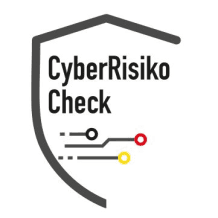What is Cloud Security?
Cloud security refers to a set of policies, technologies, applications, and controls that work together to protect data, infrastructure, and applications in the cloud. As more companies transition to cloud services, the security of these services is crucial to prevent data loss, privacy breaches, and other security-related incidents.
Challenges of Cloud Security
Utilizing cloud services offers numerous benefits, but also specific security challenges. Some of the most common challenges include:
1. Security vulnerabilities in cloud infrastructure
One of the biggest challenges is securing the cloud infrastructure itself. Cloud providers continuously work to identify and fix vulnerabilities, but it is also important for users to implement their own security measures.
2. Data loss and data leaks
Another risk lies in inadequate data management practices that can lead to data loss or leaks. It is essential for companies to implement strict data management and backup policies.
3. Insecure interfaces and APIs
Insecure APIs and interfaces are a common cause of security breaches in the cloud. Developers must strive to follow secure coding practices and regularly conduct security reviews.
4. Misconfigurations
Misconfigurations are a common issue in cloud security. The user-friendliness of cloud services can lead to security parameters being insufficiently configured.
Protective measures for Cloud Security
To ensure security in the cloud, a series of measures must be taken:
1. Data encryption
Encryption is one of the most effective methods to ensure that data in the cloud is secured. Both data at rest and in transit should be encrypted.
2. Access controls
It is crucial to implement strict access controls so that only authorized users have access to sensitive data and applications in the cloud.
3. Security monitoring and logging
Constant monitoring of the cloud environment and maintaining logs of all activities helps quickly identify suspicious activities and respond to security incidents in a timely manner.
4. Use of multi-factor authentication
Implementing multi-factor authentication (MFA) enhances security by making it more difficult for attackers to access user accounts, even if passwords have been compromised.
Implementation of Cloud Security
For effective implementation of cloud security measures, organizations should develop and regularly review a comprehensive security plan. This plan should include security frameworks, compliance checklists, and an incident response plan.
Shared Responsibility
When using cloud services, it is important to share the responsibility for security between the cloud provider and the customer. Cloud providers are typically responsible for the security of the infrastructure, while customers are responsible for protecting their data and applications.
Awareness and Training
Regular training and awareness for employees are essential to ensure that everyone in the organization understands and applies the basic principles of cloud security.
Conclusion
Cloud security is essential to ensure the integrity, availability, and confidentiality of your data. Given the increasing adoption of cloud solutions, companies must proactively work to develop and implement security strategies that meet the unique requirements of cloud environments. They should focus on regular assessments, updates, and training to stay one step ahead.
🔒 Have your cloud environment tested for vulnerabilities: Check now
📌 Related terms: Data protection, network security, IT security management
Cloud Security in Germany: Current Developments
The importance of cloud security in Germany is continuously growing. According to recent studies by the Federal Office for Information Security (BSI), German companies are increasingly affected by cyber threats. The Bitkom association reports that 84% of German companies have been victims of cyberattacks in the last two years.
Particularly in the area of cloud security, the following trends are emerging:
Increasing investments in preventive security measures
Increased awareness of holistic security concepts
Integration of cloud security into existing compliance frameworks
EU Compliance and Cloud Security
With the introduction of the NIS2 Directive and tightened GDPR requirements, German companies must adapt their security strategies. Cloud security plays a central role in meeting regulatory requirements.
Important compliance aspects:
Documentation of security measures
Regular review and updating
Proof of effectiveness to supervisory authorities
Practical implementation in corporate practice
The integration of cloud security into everyday corporate life requires a structured approach. Experience shows that companies benefit from a gradual implementation that takes both technical and organizational aspects into account.
Think of cloud security as insurance for your company: The better prepared you are, the lower the risk of damage from security incidents.
Additional security measures
For a comprehensive security strategy, you should combine cloud security with other security measures:
Vulnerability Management - systematic vulnerability management
Penetration Testing - comprehensive security tests
Security Hardening - employee awareness
Incident Response Plan - preparing for security incidents
Conclusion and next steps
Cloud security is an essential building block of modern cybersecurity. Investing in professional cloud security measures pays off in the long run through increased security and compliance.
Do you want to optimize your security strategy? Our experts are happy to advise you on implementing cloud security and other security measures. Contact us for a non-binding initial consultation.
🔒 Act now: Have our experts assess your current security status
📞 Request consultation: Schedule a free initial consultation on cloud security
📋 Compliance Check: Review your current compliance situation
📌 Related topics: Cybersecurity, IT security, compliance management, risk assessment




